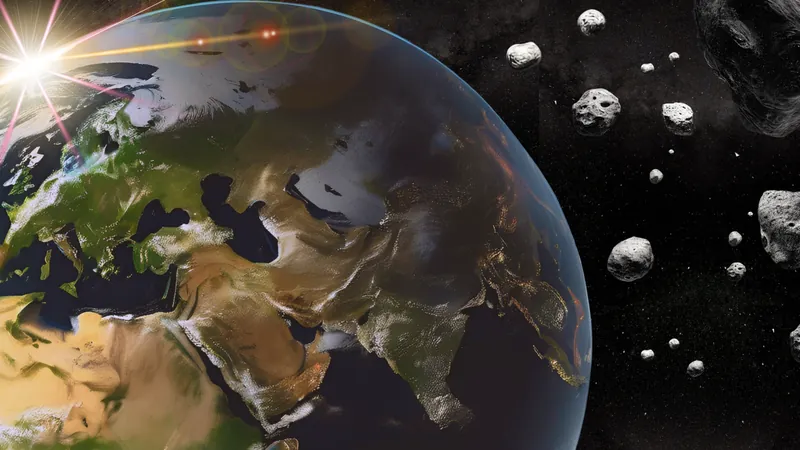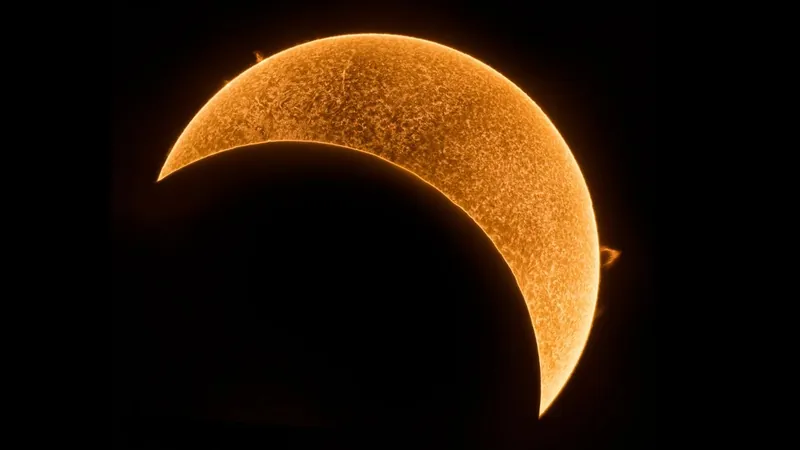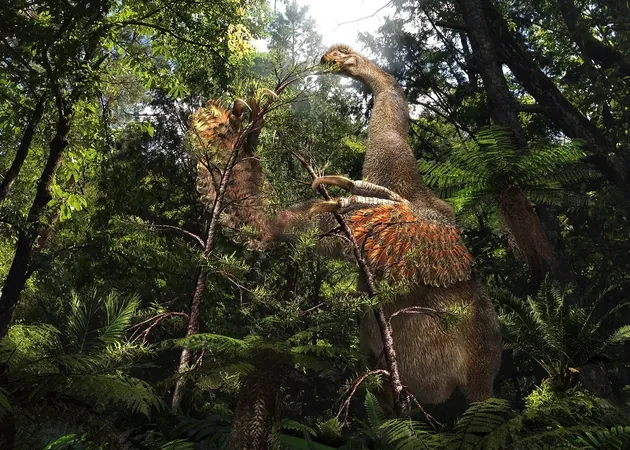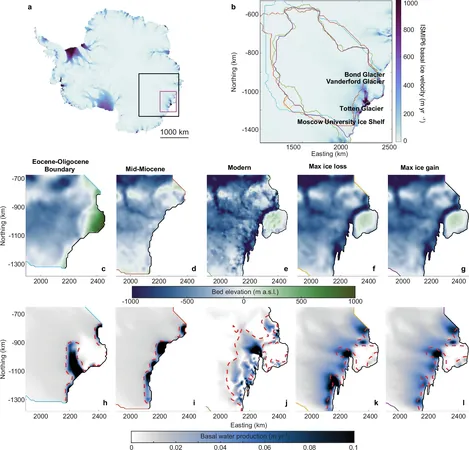
Unlocking the Mysteries of the Asteroid Belt: Meteorites Traced to Their Origins!
2025-03-24
Author: Charlotte
Introduction
In an exciting development that has astronomers buzzing with anticipation, a decade-long quest to map the asteroid belt has come to fruition! This groundbreaking research, spearheaded by institutions like NASA and the SETI (Search for Extraterrestrial Intelligence) Institute, involved tracking meteorites streaking through Earth's atmosphere.
Global Fireball Observatory
The team established a sophisticated network of all-sky cameras, dubbed the Global Fireball Observatory, stationed at various locations worldwide. Peter Jenniskens, one of the project's leading figures, expressed the extraordinary journey they've undertaken: "This has been a decade-long detective story. Each meteorite fall has provided us with crucial clues, and now we have the first outlines of a geologic map of the asteroid belt."
Collaboration and Research
Collaborating with astronomers across the globe, they successfully tracked the trajectory of 17 meteorites that have made their way to our planet, alongside other researchers who contributed their own spotting networks to build a comprehensive observational database.
Findings and Implications
Their findings, recently published in *Meteoritics & Planetary Science*, reveal that meteorites are not just dazzling phenomena but ancient relics that hold secrets about the solar system's origins. These remnants are primarily derived from the main asteroid belt, a vast field of over a million asteroids located between the orbits of Mars and Jupiter. Scientists believe that this belt is a remnant from the solar system's formative years—around 4.5 billion years ago—comprising leftover planetesimals that never transformed into full-fledged planets.
Asteroid Families
The asteroid belt isn't just filled with solitary rocks; it contains debris clusters known as asteroid families created through collisions between larger bodies, causing them to scatter and form new collections of smaller fragments. By utilizing sophisticated measurements of radioactive isotopes, astronomers can determine the ages of these meteorites and correlate them with the dynamical ages of the dispersing asteroid families.
Meteorite Origins and Discoveries
The recent research highlights that the more dispersed the asteroids are, the older the debris field is likely to be. Analyzing ten years' worth of night sky data, the team tracked back the origins of 75 different meteorites, uncovering fascinating patterns that reveal how distinct meteorite types correspond to specific orbits.
Iron-Rich H Chondrites
Among their intriguing discoveries is the link between iron-rich ordinary chondrite meteorites, known as "H chondrites," and the Koronis debris field—a treasure trove of information regarding their journey through space. Jenniskens noted that twelve of these H chondrites are believed to have originated from the Koronis field, with observable low-inclined orbits and orbital periods that correlate with this specific area of the asteroid belt.
Other Meteorite Types
Additionally, they identified that a subset of H chondrites traces back to other significant families, such as the Nele family and Massalia family, providing evidence of the diverse origins of meteorites that land on Earth. The findings extend to L and LL chondrites, which bear historical scars from cataclysmic events 468 million years ago.
Future Research and Exploration
Though this study provides one of the most intricate maps of the asteroid belt yet, researchers acknowledge that their work is far from complete. Many meteorite origins remain unassigned, and the quest for knowledge continues.
Conclusion
"This is just the beginning," said Jenniskens with enthusiasm. "Like early cartographers who mapped uncharted territories, our work reveals a continent of discoveries waiting to be uncovered as we record more meteorite falls." As we stand on the edge of this new frontier, the mysteries of the asteroid belt beckon with promises of further exploration and opportunity to unveil the tales of our cosmic neighborhood! Stay tuned as we track their celestial trajectories.









 Brasil (PT)
Brasil (PT)
 Canada (EN)
Canada (EN)
 Chile (ES)
Chile (ES)
 Česko (CS)
Česko (CS)
 대한민국 (KO)
대한민국 (KO)
 España (ES)
España (ES)
 France (FR)
France (FR)
 Hong Kong (EN)
Hong Kong (EN)
 Italia (IT)
Italia (IT)
 日本 (JA)
日本 (JA)
 Magyarország (HU)
Magyarország (HU)
 Norge (NO)
Norge (NO)
 Polska (PL)
Polska (PL)
 Schweiz (DE)
Schweiz (DE)
 Singapore (EN)
Singapore (EN)
 Sverige (SV)
Sverige (SV)
 Suomi (FI)
Suomi (FI)
 Türkiye (TR)
Türkiye (TR)
 الإمارات العربية المتحدة (AR)
الإمارات العربية المتحدة (AR)